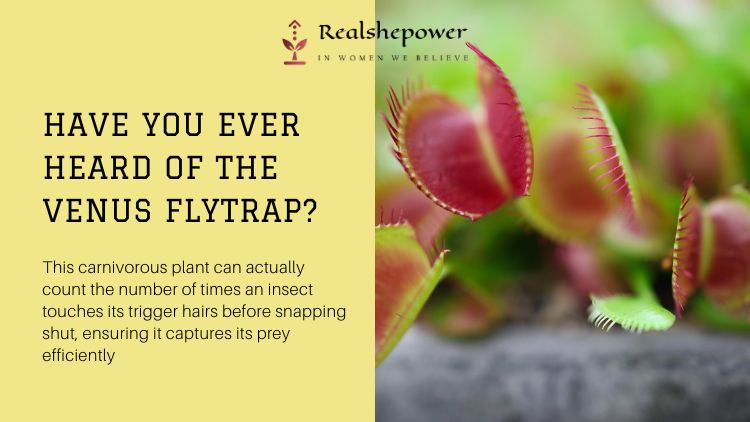The Mind-Blowing Way the Venus Flytrap Outsmarts Its Prey


Have you ever heard of the Venus Flytrap?
| Name | Venus Flytrap |
|---|---|
| Scientific Name | Dionaea muscipula |
| Habitat | Southeastern United States |
| Diet | Insects |
| Mechanism | Trigger hairs on leaves count insect touches before closing |
| Conservation Status | Vulnerable |
| Threats | Habitat loss, poaching |
| Fun Fact | The Venus Flytrap is capable of digesting spiders, beetles, and even small frogs! |
This little carnivorous plant might just be the coolest plant you’ve ever heard of! Not only does it have an unusual appearance, with its green leaves and striking red “teeth,” but it also has a unique and fascinating way of catching its prey.
The Venus Flytrap, also known as Dionaea muscipula, is native to the southeastern United States and is one of the most well-known carnivorous plants in the world. It has evolved to survive in nutrient-poor environments, and it does so by eating insects. But how does it do it?
Well, the Venus Flytrap has tiny trigger hairs on the inner surface of its leaves. When an insect lands on the plant and touches one of these hairs, it triggers an electrical impulse in the plant. The plant then counts the number of times the insect touches the trigger hairs before snapping shut, ensnaring its prey.
But why does the Venus Flytrap count how many times an insect touches its trigger hairs? The answer lies in efficiency. By counting the number of touches, the plant can determine whether the insect is large enough to be worth catching and digesting. If the insect doesn’t touch the trigger hairs enough times, the plant won’t waste energy on a meal that isn’t worth it.
Once the Venus Flytrap has captured its prey, it secretes enzymes to digest the insect and absorb the nutrients it needs to survive. The plant can then open up again, ready to catch its next meal.
The Venus Flytrap is truly an amazing plant, but it’s also one that needs to be protected. Unfortunately, due to habitat loss and poaching, the Venus Flytrap is considered a vulnerable species. If you ever come across one in the wild, please don’t disturb it!
Did You Know? The Electric Eel Can Generate Shocks Stronger Than a Taser

Have you ever heard of a fish that can generate electricity? This isn’t just a myth or a legend, but a real and shocking fact about the electric eel. But how can a fish generate electricity, and what purpose does
The Majestic Dragon Blood Tree: An Overview

The Dragon Blood Tree, also known as Dracaena cinnabari, is a species of tree that is found exclusively on the island of Socotra, located off the coast of Yemen. With its unique and striking appearance,
The Glowing Mushroom: A Bizarre Bioluminescent Fungus

The deep, dark forests of the world hold many secrets, some of which are more unusual than others. One such mystery is the strange and haunting phenomenon of the glowing mushroom. Have you ever heard
You can now write for RSP Magazine and be a part of the community. Share your stories and opinions with us here.
